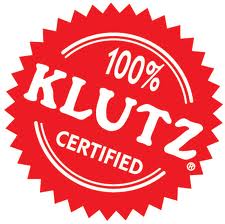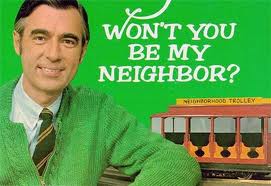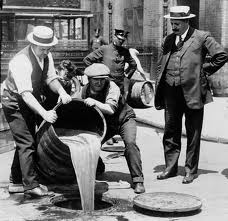THEY ONCE WERE LENDERS – Understanding government’s failure to stop bankers OR scammers from destroying homeowners.
Preface…
Sit down and relax… you’re going to need a comfortable chair. Â But, I promise you… it’ll be worth it.
In the fall of 2008, news stories about “scammers” taking advantage of homeowners at risk of foreclosure started appearing frequently in the media. I remember watching a prime-time national news magazine type program, I think it was 20/20, that was airing a story that featured a sleazy looking middle-age man in Denver, hurriedly walking from a small, strip mall store front to his car, his hand covering his face, as a reporter tried to ask him questions that he obviously did not plan to answer.
The story involved a company that had charged a handful of homeowners several thousand dollars up front to help them negotiate with their banks to get their mortgages modified. The core issue being raised by the show’s host was that the homeowners had been victims of a scam because, as a couple of the homeowners interviewed were saying, their loans had not yet been modified.
I remember wondering, to begin with, how in the world such a story had become the subject of a national news magazine television program.  I mean, “Three homeowners get ripped off by small business in Denver,” is not usually the sort of event that makes national headlines. The implication being made was that this case was emblematic of a more widespread problem, but nothing further was offered in the way of proof… no statistics, no additional facts… just statements about how homeowners should NEVER pay anyone up front to help them negotiate with their bank over a loan modification because they were “scammers.”
Around the same time, I also remember quite clearly reading a newspaper story that appeared on the front page of a major mid-western paper… it might have been the Minneapolis Star, but I can’t be certain. The large photo on page one was of a young couple with a baby in arms and maybe a four year-old standing at Dad’s hip… there was a white picket fence in the background… and a for sale sign in the yard. I can easily sum up the story in a single sentence: About eight months ago the couple had paid a law firm $1,000 to help them get their loan modified… and that’s the reason why they were now losing their $300,000 home.
And I remember thinking how ridiculous that sounded. I remembered the time that my wife and I paid a contractor $2500 and he never came back to even start the work on our deck. We were plenty angry, all right, but we didn’t even come close to losing our home because of it.
Now, you have to understand that, at the time, I was devoting my weekends to driving around Southern California conducting on-camera interviews with homeowners who either had already saved their homes from foreclosure, or were in the process of trying to get their loans modified, and the reoccurring theme was coming across loud and clear: “We tried contacting our bank on our own for a year and got nowhere, so we hired a law firm or mortgage expert company for $3,000, give or take, to help us and they saved our home from foreclosure.”
In addition, I had visited with several mortgage experts and lawyers back then, and they had let me sit by their side as they contacted banks on behalf of their clients… with their client’s permission, of course… so I knew that calling one’s bank to apply for a loan modification was not an easy thing to do. I remember once sitting waiting on hold for just under two hours only to hear the phone go dead.
And once, while I sat with a lawyer while he called a well-known bank on behalf of a client… with that client on the 3-way call… and the first thing the woman from the bank said upon hearing that the homeowner had hired an attorney was: “You know… you don’t have to pay him.”
I was taken aback, and since we were on speaker phone, I just couldn’t help but say something, so I interrupted the conversation, introduced myself as a writer, and asked the question: “How do you know she’s paying him, I mean, maybe her lawyer is her son-in-law or a friend of the family… how do you know whether he’s even being paid? Are you instructed by the bank to say that to anyone that hires someone to help them? Do they tell you to do that as part of your training?”
The line went dead.  I remember saying: “She did not just hang up on me, did she? Call her back.” The lawyer explained that we’d never get her back on the phone, but he dialed the number anyway and a full 60 minutes later… it was still ringing. “Okay, I think I’ve got the picture,” I said. I thanked him for everything and left.
I can’t tell you the name of the bank in question, except to say that when they’re a “bank,” and their name starts with “IndyMac”. You’ll have to put it together yourself from there.
Within a month or two, the number of stories appearing in the media warning homeowners about “scammers” who offered to help prevent foreclosure, increased to the point that one might have easily started to believe that tens or even hundreds of thousands of “scammers” had mobilized to overrun the country.
I found it very hard to believe that there were large numbers of such “scammers.” I mean, how many people would be willing to take advantage of working class homeowners, many of whom had lost jobs and now were at risk of foreclosure? What would be next, mugging the blind?
Many of those I spoke with back then told me that I was naïve, but I just couldn’t believe that all of a sudden there were that many people willing to steal three grand from a middle or working class family at risk of losing their home. It was like hearing about an epidemic of criminals stealing food stamps from octogenarians on fixed incomes. Really?
I’m not saying that such aberrations never happen in this country, but it’s at least somewhat rare. Our society simply doesn’t produce that many people willing to commit such despicable acts. You might find thousands willing to rip off rich people, or big companies… but working class families losing homes? How many would sign on for a job doing that?
Well, apparently… quite a few.
After two and a half years spent covering the financial and foreclosure crises, I have come to realize that there are a whole lot more people in this country willing to take advantage of homeowners at risk of foreclosure than I would have ever thought possible. In fact, I’d have to say that if you throw a dart at the front page of Google when looking for advice related to preventing foreclosure, the odds of being scammed are absolutely excellent. It’s shocking to me that this is the case, but it unquestionably is.
Look, I grew up in Pittsburgh… born in Brooklyn, hung out in places like Philadelphia, Chicago, Los Angeles… and I’ve traveled all over the world… but I’ve never heard about large numbers ripping-off working class people suffering the trauma of losing their homes. To say nothing of the risk involved… I mean, aren’t most people in this country still afraid of going to jail?
A change in our cultural norms…
Consider that in the mid-1990s, headline crimes in New York City started including descriptions of mob hits that shocked even members of the Italian mob and NYPD, including: “Arms hacked off with an ax.” “Victim castrated with crescent-shaped knife.” “Man was gutted like sheep.” “Victim buried to the neck in gravel.” What kind of person that grows up in our society does these types of things?
But, it was after the fall of the Soviet Union, and the murders were being committed by a new group of gangsters that had only recently arrived in this country, and they had very different ideas about violence than our home grown gangs. They quickly became known as the “Russian mob.”
You see, the Russian gangsters that appeared on the scene after the fall of communism didn’t exactly grow up in New Rochelle watching Leave it to Beaver and drinking Tang… in fact, many grew up in the gulags of Siberia… places where right and wrong have very different definitions than they do in our country. One member of the Russian mob vocalized his contempt to the NYPD saying: “I did time on the Arctic Circle. Do you think anything you’re going to do is going to bother me?”
The fact is… before the current financial and foreclosure crises, I don’t remember there being nearly as many scammers looking to con anyone, anytime, anywhere. Where did the incredible numbers of scammers willing to defraud anyone without giving it a second thought come from, that is to say, what were they doing five or ten years ago? Did someone put something in the water since then? Could alien spaceships have dropped them off in 2007? Is it possible that the Internet just brings out the worst in people?
It seemed to me unlikely… nothing I could think of would change societal norms to the degree seen today over such a short period of time. I set out to analyze the situation more closely and I began by profiling a sample of those individuals that had been shutdown by authorities for scamming homeowners, and those that I’ve come across quite willing to continue operating even though they are not operating legally.
The construct of my focus group sample…
Had they all come from faraway lands, as in the Russian mob example, I would have looked at cultural differences as being the root cause of their apparent willingness to scam anyone at anytime, but the group was not predominately from anywhere, and the majority could be described as being “average Americans.”
The most common factor was their chosen profession prior to the financial meltdown of 2008… almost all had come from the mortgage industry. In fact, depending on whether I looked at a sample of 25, 50, or 100 individuals… the number of ex-mortgage people was always above 80%.
I realize that should not be surprising when you consider the target for these scammers is homeowners at risk of foreclosure, a group well-known to those that worked in the mortgage industry, but I also know many that came from the mortgage industry that would be no more likely to scam a homeowner in distress than I would.
The other commonality that I found to be present was their age… most were relatively young. Depending on the sample group I looked at, three-quarters were under 40… and more than half were under 35. It was difficult to be precise but I think it’s safe to say than fewer than 20% were over 45.
Education was the third commonality I was able to identify, and I estimate that 80% of the group never earned a college degree, although more than half reported that they had attended some number of college classes after high school. Almost all said they never finished college because the mortgage business paid so well.
I also found it interesting that a large percentage, perhaps just over half, reported having lost a home or homes as a result of the economic meltdown, and my sense was that a very low number saw the meltdown coming, fully understood its causes, or recognize the permanent or long-term nature of the changes to the mortgage industry.
In terms of the U.S. economy, they are a very optimistic group. I would say that 80% believe that worst case, the housing market will bottom out in the next 2-3 years, and many think that some areas have already hit bottom, and a similarly large percentage think that what they’re doing today is temporary… and at some point they will return to careers in mortgage lending. The longest timeframe for our country’s economy to recover that I heard from 90% of the group was 5-7 years.
The absolute ineffectiveness of the government’s response…
Over the last year, there have been a flurry of new state and federal laws ostensibly created to protect distressed homeowners from scammers, and one would have to assume that awareness among distressed homeowners about the potential for being scammed is certainly higher than ever.
However, there is absolutely no evidence that any of this legislation has reduced the number of scams, and in fact, my research strongly indicates that the number of scams targeting distressed homeowners has continued to increase. But the effect of the new laws has also caused scammers to diversify their illicit offerings and therefore will now be more difficult for regulators to address and law enforcement to police.
The latest count, as listed on California’s Office of the Attorney General Website dedicated to loan modification fraud as of April 23, 2011, lists 55 individuals and 32 companies, against which the AG has taken legal action related to fraudulent loan modification, forensic loan audit, and related foreclosure-related services, to-date. Considering the size of the State of California, the numbers are essentially zero.
The California State Bar is reporting the same numbers of consumers filing complaints this year as last, although the number of disciplinary actions taken by the bar hasn’t changed in any meaningful way, indicating that they are having a difficult time both investigating and prosecuting lawyers accused of being “scammers”.
This article seeks to explain where today’s proliferation of scammers came from, who they are… why they are the way they are…
… And why their presence is all but certain to continue to impact our society for a generation unless we come to understand that the same people that caused of the crisis, also created the scammers.
They Once Were Lenders…
Being a lender of money… the phrase itself congers up images of stature and great wealth. Investors funding loans providing the capital that drives our economy, building industries, creating prosperity… to be a lender of money has always meant having power and prestige… to be the person with the gold that makes the rules.
To be the provider of funds is to have a seat at the proverbial table. In our society, such a person is to be respected, their opinions are sought out… when they talk… others listen. And although in the past, being a lender meant being a “banker,” over the last thirty-odd years, the advent of securitization and financial innovation, supported by ongoing legislation favorable to the finance industry, a series of disastrous attempts at deregulation, and the growth in equities markets, all combined to broaden the types of lending and increase the need for “lenders.”
The type of lending that grew the fastest over the last three decades was “sub-prime.”
Sub-prime lending began its meteoric rise in the late 1970s, but the lowering of interest rates in the early part of the 1980s was the fuel it needed to explode. And from the start, sub-prime lending attracted individuals with very a very different set of ethics than were found among the traditional bankers and financiers of Wall Street. Many, in fact, came from failed Savings & Loans.
You see, the 1970s, with the decade’s spiraling interest rates were very difficult for the Savings & Loan industry ironically because of over-regulation.
S&Ls were originally a very important component of the government’s response to the financial disaster that caused the Great Depression, because they made it possible for people to buy homes at a time when our nation’s bankers were reluctant or incapable of lending.
S&Ls were required to pay a regulated amount of interest on short-term deposits that were insured up to $40,000 by the FSLIC, and then invest those deposits in 30-year fixed rate mortgages on residential real estate within a 50-mile radius of the S&L’s home office. In the 1970s, an S&L might pay 5.25% to 5.5% on deposits, and because long-term interest rates were generally higher than short-term rates, the owner of a Savings & Loan could make a fairly nice, if somewhat boring living.
Of course, that was fine during the decades of relative stability that followed WWII… before the inflation of the 1970s appeared on the scene thus causing interest rates to rise.
Higher rates caused homeowners to keep their homes longer, first-time buyers were forced to delay becoming first time homeowners, and rising unemployment all combined to significantly reduce the demand for housing.
Those that did buy homes more frequently took advantage of the “assumable” clause in mortgages that allowed them to take over the mortgage at the existing interest rate. The typical S&L’s mortgage portfolio, that had traditionally turned over every 5-7 years, stagnated during the latter part of the 1970s… and S&L earnings followed suit.
At the same time, S&Ls were finding it increasingly difficult to attract depositors as well. The five percent interest rates they were permitted to pay out started to look pretty silly with inflation at 12% a year… and climbing. Depositors flocked to Money Market mutual funds that pooled deposits in order to purchase large Certificates of Deposit from banks and S&Ls, and on which there were no interest rate controls.
S&Ls were now stuck between the rock of the rising costs of funds, and the hard place of stagnant incomes, and with only 30-year fixed rate mortgages to provide returns on invested capital, the S&L industry was doomed even before deregulation and other legislation would start it on a rollercoaster ride that would end in its demise.
When the pendulum swings too far…
First, Congress and the Carter administration gave us the Depository Institutions Deregulation and Monetary Control Act of 1980, which abolished state usury laws that limited how much interest could be charged on primary mortgages, began a six-year phase out of deposit interest rate ceilings, and raised the deposit insurance provided by the FSLIC from $40,000 to $100,000.
Then, a couple of years later, the Gain-St Germain Depository Institutions Act of 1982, expanded what S&Ls were allowed to invest in, permitting investment in short-term consumer loans, credit cards, and commercial real estate, among others.
The idea was simple… allow S&Ls to diversify their portfolios in order to increase their short-term earnings and it would help shield them from economic instability in the future.
But, it’s not hard to imagine that many owners of S&Ls were a less-than-happy group back in 1980. Many S&L owners were second-generation owners… in other words… they were the sons of founders. For the last decade they had watched their institution’s capital erode as the housing market had essentially slowed to a standstill… and their customers started saving in Money Market mutual funds.
In other words, spending the 1970s running the S&L your Dad founded was no fun whatsoever, and by many wanted out badly enough that they weren’t all that picky about the price, so when deregulation of the S&L industry soon created buyers for S&Ls that saw nothing but opportunity ahead, many were more than ready to sell.
Most were initially under-capitalized, however, but the new owners found that they could get their hands on almost unlimited funds simply by raising the interest rates they offered on deposits, and since such deposits were insured by the federal government, the financial health of the S&L didn’t much matter to anyone. The new owners raised rates and money flooded in.
Deregulation also meant that there were now plenty of investment opportunities available to S&Ls for the first time, in much riskier commercial real estate developments, for example, and the S&Ls could compete with the banks by making loans based on more relaxed credit standards, such as home loans that required no down payments.
These new S&L owners, however, were poor managers and as many S&Ls failed, the deposit premiums paid by those that remained went steadily higher. And because there was no distinction between well-capitalized S&Ls, and the ones that were taking on too much risk, the well-capitalized and more conservative institutions found themselves forced to match the competing interest rates offered by their problem competitors, causing their costs of funds to increase.
It was a recipe for the disaster stew that was about to boil over… and yet, Congress kept its collective head firmly planted in the sands of short-term thinking. (It’s nice to know that some things never change.)
Had the federal government empowered the regulators to take a tougher stand on S&Ls in 1982, it’s likely that the whole mess could have been avoided, but notwithstanding the extreme pain felt during the Great Depression, regulating financial institutions has never been our government’s strong suit. Back then, because virtually every congressional representative had at least one “good friend” that owned an S&L in his or her district none was in any hurry to cause immediate problems for their important constituents, even to ensure their longer-term financial health.
If we hit the jackpot, what have we won?
As described by Michael Hudson in his fabulously detailed if terribly disturbing book about sub-prime lenders, titled “The Monster,” when President Ronald Reagan signed an S&L deregulation bill in 1982, he is said to have quipped: “All in all, I think we’ve hit the jackpot.”
State governments, Hudson explains, immediately started competing for S&Ls by offering the lowest barriers to entry and the most lenient oversight. And one didn’t need much start-up capital to open an S&L, in fact, you could list “non-cash” assets to establish that you could operate in a stable manner. As in, “gosh… I don’t have any cash right now, but I do own a 4-plex in Poughkeepsie, a ’67 Mustang that’s totally cherry, and I suppose I could throw in my baseball card collection from the 60s.”
The State of California was among the most aggressive in terms of marketing to the S&Ls, in fact in Hudson’s book, he recalls seminars being held all over the state that promised to teach attendees how to start their own Savings and Loan, including one in particular titled: “Why Does It Seem Everyone is Buying or Starting a California S&L?”
At the end of the decade, when the Bush administration and congress were finally forced to deal with the failed industry’s problems, all S&Ls were tarred with the same broad brush. The Financial Institutions Reform, Recovery and Enforcement Act of 1989, didn’t distinguish between well-run S&Ls and insolvent institutions, it took away from the entire industry, most of the investment freedoms granted at the beginning of the 1980s.
An Industry About to be Born…
It seems to me that two key pieces of legislation, the previously mentioned Depository Institutions Deregulation and Monetary Control Act of 1980 (“DIDMCA”), and the Alternative Mortgage Transactions Parity Act of 1982 (“AMTPA”), worked like sperm and egg to give birth to sub-prime lending, with securitization being the incubator.
The AMPTA, which was intended to provide “parity” to non-bank lenders, preempted many state laws that had precluded lenders from offering anything but conventional fixed-rate mortgages, and in practice, allowed for the obfuscation of a loan’s total costs. This was the legislation that led to the creation of a variety of new types of mortgages, including the different flavors of adjustable rate mortgages (ARMs), interest only mortgages, and those offering balloon payments.
Because of AMPTA, consumers could now be titillated by teaser rates for the first few years, only to be slammed when the adjustments caused payments to be reset. And even worse were the loans that gave the borrower the ability to decide how much they would underpay during the first few years, with the amount of the underpayment being tacked onto the loan’s balance. Now your mortgage balance could actually increase from $300,000 to $350,000 in the first few years, destroying any equity a homeowner had in his or her home when they bought it.
Of course, many would argue that it’s not the loans themselves that were the problem, rather it was the people that chose these loans that caused their own future grief. These are the same people that continue to oppose anything even remotely resembling a bailout for homeowners, and according to Fannie Mae’s most recent survey, it remains a sizable group, roughly 53% of their survey’s respondents, which is why even after three years of watching the foreclosure crisis drag our economy straight down, our government lacks the political will to address the problem and stop the carnage.
(Sidebar: In case anyone is interested, my initial motivation for writing my blog, Mandelman Matters, was to combat the rhetoric of the banking industry following the meltdown that began in 2007, which was starting to place blame for the emerging crisis on “irresponsible sub-prime borrowers,” a group that could never have caused Wall Street’s demise, let alone the global meltdown that followed.
During the fall of 2007, then Treasury Secretary Hank Paulson and Fed Chair Ben Bernanke… the crazy guy with the beard who just keeps printing money to no avail… both blamed “sub-prime borrowers” during the fall of 2007, and the bankers saw their opportunity and the industry’s P.R. machine echoed the message throughout the media.
So, in a letter I wrote in November of 2007, which I sent to my representative in Congress, my two state senators, Hillary Clinton, and others… the problem with allowing the public to erroneously place the blame for the meltdown on “irresponsible sub-prime borrowers,” was that when the government finally came to understand the real cause of the crisis, they would lack the political will to do what’s needed to fix the problem… because by then, too many voters would strongly oppose bailing out “irresponsible sub-prime borrowers.”
My letters were, of course, ignored, and Mandelman Matters was born. And yet, here we are 450 articles and countless trillions in taxpayer funded bank bailouts later, and the same core issue continues to prevent our elected officials from doing what’s required to fix the problem. Hank Paulson, however, in his book about his last two years as Treasury Secretary, titled “On the Brink,” admits this pivotal mistake, saying that when he looks back at statements he made about sub-prime loans back in the fall of ’07, it makes him “cringe.“
“We just plain got it wrong,” he says in his book as he talks candidly about this very subject. And when I read his admission while sitting up in bed one night about a year ago, I’ll admit that I started to cry.)
The truth is, that under normal circumstances, I might even agree, at least in part, with those that place blame on borrowers for signing up for toxic mortgage products. But, because our financial crisis and economic meltdown have not been the result of a housing bubble popping, but rather they are the byproduct of Wall Street’s actions that caused the total destruction of the credit markets in the summer of 2007 when triple A rated bonds were downgraded and the demand for mortgage-backed securities dried up overnight, the circumstances surrounding obtaining a mortgage in this country, or being able to refinance it, or even selling a home that became unaffordable, have been anything but normal.
Easy to be Hard for Minorities…
A common practice employed by lenders in the past was called “red lining,” and it commonly meant that they wouldn’t lend in minority neighborhoods, regardless of an individual’s credit score.
So, first it was hard money that showed up to fill the void, but soon the consumer finance companies started offering small loans in disadvantaged communities that people used to pay medical bills, or maybe to get through the holidays, but by the mid-1980s, securitization was lowering the risk associated with lending and they began offering second mortgages.
In “The Monster,” Michael Hudson provides vivid descriptions of how these companies would hook someone with a $300 loan, and then systematically barrage them with offers for additional loans in an effort to make them a “customer for life”… although a “debtor for life,” would be more accurate. Since being deregulated, these companies would make loans at 15 to 18 percent, with as much as 10 points up front, which was still less expensive than the hard money lenders, so they could actually say… with straight faces… that they were the good guys for providing loans to underserved communities.
Ultimately, these consumer finance companies would be accused of cheating borrowers in any number of ways, setting aside many millions to settle class action lawsuits accusing them, in so many words, of robbing and cheating their customers.
As companies go, these were literal pressure cookers for sales people. They were widely known for their abusive managers that would constantly drive salespeople to make more loans at all costs… and then make even more still. It didn’t matter what you had to do, you just had to do more than you did the month before, or you would risk being berated by your boss in front of your peers.
An excerpt from “The Monster”…
In Arizona, a judge scolded Transamerica for trying to throw a 77 year-old widow out of the house her late husband had helped her build 42 years before. Lennie Williams, a retired house cleaner, was getting by on $438 a month. Her mind was failing her and she got snookered into signing up for a mortgage that obligated her to pay Transamerica $499 a month.
The loan carried 8 points in up-front charges and an interest rate of nearly 18 percent. The mortgage salesman who put together the deal later testified he didn’t think Williams understood the loan, but he had said as little as possible about the details because he didn’t want to lose the sale.
“I didn’t want to bring up the fact that we could foreclose on your home. People don’t want to hear this,” he explained. “When you close a loan, you try to get through with it. You say everything you have to say and no more.”
Consumer finance companies were the predecessors to the sub-prime lenders that would come out of the failed Savings & Loans. After being trained in the horrific environments at Transamerica, ITT Financial, Household Finance, Beneficial and others, they were recruited by institutions like First Alliance Mortgage and Long Beach Savings & Loan, which was started by a man whose name would become synonymous with sub-prime lending, Roland E. Arnall.
Hudson paints a picture of Arnall that explains a lot… he was born in Europe during WWII and escapes with his family to come live in the U.S. He’s a hard charging kind of kid, doing everything possible to make money at all times. He becomes a real estate developer in the 1970s, ends up opening Long Beach Savings & Loan, and when the restrictions on S&Ls become too much for his tastes, he opens Long Beach Mortgage… which he later renames “Ameriquest.”
Long Beach recruited loan officers that had worked at Transamerica and the like, and combined with his overdriven personality, he was known for doing things like doubling sales goals moth over month and firing anyone who said they couldn’t do it. He began to build one of the country’s largest sub-prime mortgage companies, but he would never have gotten very far alone, because fairly early in the life of Long Beach Mortgage, he was making so many loans that he simply ran out of money to loan.
He needed a new source of funds, looked to Wall Street, and wouldn’t you know it, he found Lehman Bros.
Enter the Financial Innovation of Securitization…
Wall Street’s new invention was “securitization,” and it would allow lenders like Arnall’s Long Beach Mortgage to make essentially an unlimited number of loans because they could now be immediately sold to Lehman Bros., who would then use them to create a pool of loans, which would then be sold in slices, called “tranches,” to investors.
The investments were referred to as “mortgage-backed securities,” and the investors that bought these bonds, of sorts, did so in order to receive a percentage of the cash flows generated by the mortgage payments that were paid into the pool. As compared with other investments, they were considered very safe, and yet they paid a relatively high rate of interest… like tasting great and being less filling all at the same time… what’s not to love?
(If you’re not already up to speed on securitization and how it works, you really should consider reading my article on the subject: “Mandelman U. Presents… Securitization and Mortgage Backed Securities.”)
Now, with essentially unlimited capital at their disposal, the sub-prime lenders had enough fuel to make it to Mars and back as many times as they wanted to go. The world was about to change for the next few years, anyway… because now anyone would be able to get a loan. Prices would rise with the increasing demand that would be created by the flood of accessible capital, and so those loans could be refinanced over and over as the value of the collateral increased.
With no limits on the how much they could loan, all they needed now were army of loan officers…
We’re Going to Need an Army…
Roland Arnall’s Long Beach Mortgage, now with unlimited funds, would spread out across the United States bringing his high cost loans to millions of Americans, and he became immeasurably wealthy as a result, as did those that worked for him. He was never satisfied… a billion a month in loans, only made him demand two billion.
To do so, however, he needed an army of salespeople, and he wanted them trained the Ameriquest way.
In all-important California, prior to 1996, this meant finding loan officers licensed by the California Department of Real Estate, and recruiting them to come over to Ameriquest. It couldn’t have been easy, and he must have realized that it would be much easier to hire and train sharp, young sales people than it would be to recruit someone licensed by the California DRE who would be more established and would have to be changed to fit the Ameriquest way of selling loans.
Not just anyone would put up with working in an environment in which you could be berated to get more sales, and likewise, not just anyone could be pushed into taking advantage of little old ladies and their Social Security checks.
The types of individuals that studied and passed the DRE’s exam, did so expecting to go into business for themselves as independent contractors, and therefore were independent thinkers… clearly not the type of people companies like Ameriquest were looking to bring on board.
Wasn’t it incredibly lucky, therefore, that in 1996 the law governing the licensing of mortgage lenders in California changed when the California Residential Mortgage Lending Act and the California Finance Lender’s License (“CFL”), used when you sold only through in-house loan officers, and the broader CRMLA licenses were created, both became operational. Now someone could become licensed to broker, originate and service mortgages without the need to pass that pain-in-the-neck test required by the state’s Department of Real Estate. Yes, it was very lucky, indeed.
Licensed under the CRMLA/CFL are individuals, partnerships, associations, limited liability companies and corporations, including many of the largest “Fortune 500” companies. Those with these new licenses were required to be employees issued W-2s, which was fine for larger organizations, as opposed to their DRE licensed counterparts who worked as independent contractors.
Now large sub-prime lenders could easily recruit the personnel they needed to grow their sales without having to bother with new sales people having to receive any training or pass any tests. Armall and others in his peer group were free to hire young salespeople in masses, put them in classes, and if they didn’t perform… toss them out on their behinds.
Hudson’s investigations of Ameriquest showed that the company’s system was designed to back borrowers directly into a corner, or if you prefer, put them up against a wall. The company’s loan officers were trained that when a customer complained about the costs of their loans, they were to assure them that they need not worry because once they’d made their payments on-time for 12 months, the company would refinance them into the lower cost loan.
In addition, the payments on Ameriquest’s 2/28 adjustable rate mortgages ALWAYS shot up towards the end of the second year, driving the borrowers to refinance with Ameriquest or pay higher fees somewhere else.
As the second half of the 90s came and went, Ameriquest employees saw the company’s sales practices investigated by various state attorneys general, and numerous fines get paid, but at the end of the proverbial day, they also saw Armall become a billionaire as he lived out the rest of his life in opulent luxury.
He and his wife, Dawn, bought a $30 million, 12,000 square foot mansion in the Holmby Hills section of Los Angeles. Tony Curtis had owned it in the early 1960s before selling to Sonny and Cher. A year later, the Arnalls shelled out $46 million to buy Aspen’s Mandalay Ranch, a 650-acre property with a 15,000 square foot mansion, and a 3,500 square foot guesthouse.
Many of Ameriquest’s customers lived out very different lives than that of the Arnalls, with many borrowers, after being tricked and trapped by the company’s sales practices, and after their payments shot up with no opportunity to refinance and prices starting to fall. A few in Hudson’s book, lost homes and found themselves living out their lives in motel rooms or as long-term guests with relatives.
Like a gaggle of raptors…
The loan officers that trained at companies like Ameriquest and had come out of places like Transamerica, would ultimately move on to places like WaMu, IndyMac, or even Wells Fargo, Bank of America or Countrywide. And as the housing bubble began to inflate in 2003, sub-prime was going mainstream. Wall Street firms like Lehman Bros. were buying sub-prime mortgage originators… and what had been a relatively small group of loan officers was now multiplying like a gaggle of raptors.
They had learned the business of lending in the most oppressive and unethical environments and as they moved up corporate ladders at various commercial banks and mortgage companies, they instilled their own ways of doing business, developed their own cultures, and tried to make work what worked before, cross pollenating sales techniques until the influence of places like First Alliance Mortgage and Ameriquest could be seen and felt throughout hundreds of lenders all over the country.
What had once been a respected career that involved honest dealings and careful underwriting to protect one’s financial institution and look out for the borrower’s interests, was being transformed into high pressure sales organizations only concerned with profits and at best operating on the edge of the law.
Over the years, a variety of state AGs have tried to take action against the business practices of various sub-prime lenders who were clearly abusing communities and ruining the lives of homeowners, and in limited instances have had some success. But, the lenders on the losing side of such actions often just file for bankruptcy and the perpetrators end up opening new companies that go right back to their underhanded business as usual.
And the lending industry’s lobbying efforts have won out in all cases, essentially arguing that poor and working class neighborhoods need loan sharks.
That sinking feeling…
By the summer of 2006, the Fed had raised interest rates 17 times in a row, housing sales had slowed, prices were softening, and I had long-since started warning my own friends to get out of speculative real estate deals as the evidence of dark skies forming on horizon was now abundant. In response, they’d tell me about real estate’s safety and something about how a home’s value couldn’t go to zero, I suppose as their technology stocks did after the dot-com bubble popped in 2000.
By summer of 2006, a parade of prominent economists were already explaining to the world what was about to transpire… not that many people were listening, least of all Ben Bernanke, who proved beyond any doubt that what he knew about the housing market could not hope to fill a thimble.
Then came the tenth of July, in the year of our Lord, 2007, and at a news conference being held in London, Standard & Poors and Moody’s, the two largest bond rating agencies were about to completely botch the handling of their announcement that the ratings on 1,032 bond offerings were being downgraded. Some would drop from AAA to AA, but others would find themselves with a BBB rating.
The bonds being downgraded represented less than one percent of the mortgage-backed securities backed by sub-prime loans, but investors saw smoke and knew there would be fire to follow, because if the ratings agencies had gotten these wrong, what was to say that they didn’t improperly rate others as well.
It’s astonishing how fast things locked up beginning on that inauspicious day. The credit markets were frozen solid within a week or two… tops. Demand for residential mortgage-backed securities (“RMBS”) dried up almost as fast, and derivatives such as Collateralized Debt Obligations (“CDOs”), which derived their value from the mortgage-backed bonds, went with them.
With no demand for MBS, the secondary mortgage market stopped buying mortgages almost immediately and banks and other non-bank lenders found themselves unable to sell the loans that were now stuck on their balance sheets, and capable of destroying their required ratios. Everyone started hoarding cash… banks stopped lending even to each other… no one knew who had what on their balance sheet, who would prove overleveraged and potentially not recover.
It was roughly four weeks later, on August 8, 2007, when the Fed reversed its position of just a few weeks prior, and Bernanke started pumping liquidity into the financial system like a fire hose locked in the “On” position. Money needed to flow through the global financial system or the system would collapse, companies wouldn’t make payrolls, all sorts of credit derivatives and transfer payments wouldn’t be made…it would be the end of the world as we knew it.
On August 10, 2011, PBS News Hour’s, Jeffrey Brown interviewed two “experts” in global finance, Laurence Meyer, a former Federal Reserve Board Governor, and Glenn Hubbard, who was at the time, Chairman of the President’s Council of Economic Advisers. It had been two days since the Federal Reserve and EU Central Banks had pumped $326 billion into the global financial system, and PBS was asking why.
JEFFREY BROWN: All together, central banks have pumped some $326 billion into the global financial system in the past 48 hours. Why don’t you explain what the Fed, other central bankers are doing? What does it even mean to pump extra cash into the financial system? Where does that money come from, and where does it go?
LAURENCE MEYER: Well, it creates deposits at the Federal Reserve by lending, by lending to these primary dealers, for example.
JEFFREY BROWN: Primary dealers meaning…
LAURENCE MEYER: Large banks and broker-dealers.
Doesn’t that exchange make you wonder why Lawrence Meyer didn’t just say that the $326 billion was being pumped into large banks and Wall Street broker-dealers, instead of saying “it creates deposits at the Federal Reserve by lending to primary dealers?”
JEFFREY BROWN: So that, what, so they can lend to each other? What is the problem that they’re trying to fix?
LAURENCE MEYER: So they can lend to each other, and so that they can, more generally, so that the lending can take place between banks and other institutions who lend to each other in the money market. And what happened was that that got disrupted because of a very abrupt re-pricing of risk in the economy. They became less willing to lend to each other.
You see… banks wouldn’t lend to each other because no one knew who was solvent and who had leveraged themselves across a bridge too far. And “disrupted because of a very abrupt re-pricing of risk in the economy.” Abrupt re-pricing of risk is just another way of saying that bond ratings were lowered overnight.
JEFFREY BROWN: Mr. Hubbard, explain more about this idea risk and re-pricing of risk. I think it sounds simple, but it’s at the heart of what we keep talking about in all of this. Explain it a little more for us.
GLENN HUBBARD: Well, exactly. I think many economists believe that risks had not been accurately priced in recent times, that risk premium — that is, the spread you would get for bearing risk — were very, very low by historical standards.
What we’ve seen is a pricing where the risky assets would now require much higher rates of return. We saw this in this market for so-called subprime mortgages, but it’s really filtered throughout markets for risky debt into higher-grade mortgages and into the leveraged loan market.
Did you read that last sentence carefully? We saw it in so-called sub-prime mortgages, but it has really filtered throughout markets into high-grade mortgages and leveraged loans? Hmmm… I guess “irresponsible sub-prime borrowers buying homes they couldn’t afford” didn’t cause the crisis after all… what do you know about that?”
JEFFREY BROWN: And staying with you, how does this happen? How do we get in a situation where the risk factor is out of balance? How do smart people in the financial world not make the equation right so that we tip over into a kind of bubble here?
GLENN HUBBARD: Well, it can happen in a number of ways. First of all, there’s been enormous global liquidity in financial markets chasing returns, putting downward pressure on yields and on risk premia. Also, people can learn more about risk characteristics. There’s been a change in views in the past few months about how risky subprime lending is and other forms of lending. So it really is about learning over time.
Glenn has no clue how this happened. Global liquidity pushing down yields and risk premia… premiums, for the rest of us… Hubbard has always been a real pompous ass. A change in views over the past few months about how risky lending is? Was “lending” something new, and we just didn’t understand it on Wall Street back then… in 2007?
So, Brown tries the same question with Meyer:
JEFFREY BROWN: How do you explain how this happens?
LAURENCE MEYER: Well, I think there are some fundamental forces that have been in play over the last 20 years. The economy is more stable; there are longer expansions, shorter contractions. So there are some fundamentals that support that credit risk spread should be narrowed.
But things go in cycles, and they get overdone. Long-term rates were very low; credit spreads were very low. People were searching for yield, looking for more exotic, going out to the fringes, and taking on more risk and becoming complacent about that risk.
I think, in some sense, it was inevitable at some point that credit spreads were going to widen. It just happened quickly, very abruptly. And sometimes when it happens so abruptly, people get worried about the riskiness of people who were there, who, you know, they’re borrowing and lending, and they pull back very sort of aggressively from that.
So, you should see clearly… if you’ve always been confused at what went on back then… it’s only because these are the kind of clowns we’ve got running our financial system and they don’t have a clue about what’s happening, so they stumble about incoherently throwing big words around.
Just remember the number of times these guys pointed out that whatever it was that happened, it had happened “VERY ABRUPTLY.”
Will the real “irresponsible borrowers,” please stand up?
Between 2004–2007, the banking lobby asked Congress to approve of our nation’s banks issuing enormous amounts of debt, investing the proceeds in mortgage-backed securities (“MBS”). This is what the experts are referring to when they use the term “financial leverage.” Essentially, the bankers were betting that house prices would continue rise, and that homeowners would continue to make their mortgage payments, but for those things to happen there would have to be mortgage lending… but mortgage lending had dried up “VERY ABRUBTLY” as banks hoarded cash, and now there wasn’t any mortgage lending.
No mortgage lending,,, VERY ABRUPTLY… means housing prices will fall, because can’t get a mortgage means can’t buy a home, and when demand for something goes down… anyone, anyone… price goes down… very good, class. Refinancing loan also dried up VERY ABRUPTLY, and by the time there was any hope of refinancing most people were already underwater.
What the banks did leverage-wise is akin to a homeowner taking out a second mortgage in order to invest in the stock market. As long as the market was rising, this leverage magnified their returns, but when prices started falling the effect was horrendous. Lehman Bros. was leveraged by about 30:1. WaMu, I believe was around 40:1. Other institutions were even in worse shape.
Our bankers had assets-to-capital ratios that were way out of whack, as well. Assets, by the way, on a bank’s balance sheet are loans, and capital is, well… capital or shareholder’s equity. Having an assets to capital ratio of 25:1 means that the bank has $25 in loans for every $1 in capital. It also means that if the bank’s assets fall in value by 4%… it will wipe out the bank’s capital.
It’s an oversimplification, to be sure, but it doesn’t matter… just remember that at 25:1, if the assets go down in value by 4% it leaves the bank insolvent.
Well, in the fall of 2008, Bank of America was 73.7:1, which means if the value of its assets had slipped by even one or two tenths of a percent, its capital would have been wiped out and the bank would have been insolvent. And if you were to have included BofAs “off-balance sheet” transactions, the bank’s assets to capital ratio was a staggering 134:1. (To contrast those numbers, just consider that during the 1970s, a bank’s assets to capital ratio might have been 7:1.)
Everyone should be able to clearly see that Bank of America’s problems were not caused by anyone but Bank of America.
Let’s wrap it up, stick a bow on top, and ship it to everyone who still blames borrowers for the financial and foreclosure crisis, shall we.
So, our nation’s banks had gorged themselves on Collateralized Debt Obligations and credit derivatives, leveraged assets by 30-40 to 1, and lowered loss reserve account balances in order to pay themselves unprecedented sums.
And as if that weren’t enough to ensure insolvency, their assets to capital ratios were at levels far beyond reckless… certainly bordering on criminal in many countries, and likely punishable by death in some… and not only were these bankers not punished, not only do they all still have their jobs, but they were rewarded with multi-generational wealth to be layered on top of their unconscionable billions and encouraged to do whatever they think is right going forward.
All while they were permitted to publicly lay blame for their catastrophic outcome that has broken the economic back of the world’s wealthiest nation, on the working class American homeowners, to whom they’ve also been allowed to send the bill.
And, to add insult to injury, our government has stood by obtuse and witless as these same banks have been permitted to lie, mislead, abuse, disrespect, malign and outright torture homeowners trying to apply for a government program funded by the taxpayers themselves… only to find at the end of three years that the outcome of a regulatory investigation into the banks and servicers is that they must investigate further and self-assess what should happen as a result of their egregious behavior?
And still, when most homeowners try to turn to the courts for the possibility of some sort of relief, however remote, they find themselves chastised for having had a financial hardship, told they lack standing, and called irresponsible borrowers… by the bankers who in point of FACT are WITHOUT ANY QUESTION… the most irresponsible borrowers the world has ever seen.
It’s amazing that America’s homeowners haven’t risen up with a voice so loud to make the Tea Party sound like a dropped pin. I understand it, however, they are in large part ashamed and don’t want anyone to know they’re struggling to make their mortgage payment, and secondly… homeowners could not have seen this coming… our country treating homeowners as though their lives or rights meant nothing.
But, that’s not all…
I guess that would be enough to say about what’s transpired these last so many years, but in addition, todays homeowners must also face the fact that they are almost literally being hunted by a group of highly trained individuals desperate for money from any source, and trained by the banking class to take whatever money they need from homeowners in distress whenever they want and using any means possible.
And yet our government’s response is collectively for the last three years continues to be… “We’re trying our best… awfully busy you know… try not to get ripped off, but if you do just dial 1-800-EAT-SH#T?” That about cover it?
Federal regulatory agencies, such as the FTC, says it just doesn’t have the manpower to effectively police what’s going on today.
But, Memo to the Obama Administration: If you can’t adequately police Baltimore, perhaps we have to bring a few guys back from one of the foreign military posts that are still sitting on the 38th parallel in order to stop the spread of communism, a form of government certain only to bankrupt a nation were it to actually succeed in spreading.
They once were lenders…
As a group, those that hunt homeowners in distress are still relatively young in terms of their years, they have little if any formal education… they have natural sales abilities, which were honed by professionals hell bent on training them to deceive so that they would become an army of sorts… an army trained to seek only dollars regardless of their cost and irrespective of who they hurt achieving their petty objective.
Their competitiveness has been heightened as well, because that too served their bosses.  They earned, in many cases, $50,000 a month, and more… Over a decade they were shown indisputable evidence that crime pays, and pays handsomely. They watched their bosses make incalculable sums through highly questionable means… and flat out get away with it.
Them one day, quite abruptly, the proverbial music stopped… without any warning they could discern, the whole thing was over… overnight. The money was gone, and they were not prepared. They lost their cars, their homes, their boats, everything, and they could no longer do for a living what they had been trained to do. But what was it that they had been trained to do, really? Sell free money for which everyone qualified?
But this meltdown wasn’t their doing either… they were only pawns whose lives were played with by the titans of Wall Street who cared little for any damage they might cause.
It was over too fast and they were left with no seat at tomorrow’s table. They once were lenders, but now what? Now, many of them were, in truth, scammers.
Loan modifications and debt settlement programs provided a soft landing for the first few years. . The up front fees made them feel rich again. They rented huge offices for their loan modification and debt settlement companies… tens of thousands of square feet they weren’t even using… they took it so they could grow into it… without giving it a second thought.
It’s not clear just how many loan modification and debt settlement companies were truly deserving of the moniker “scammer,” but regardless, state and federal regulators started receiving thousands of complaints from homeowners claiming to have been scammed, and the FTC, state Attorneys General, State Bar associations, and other regulatory and law enforcement agencies have all played a role in shutting down companies that were run by those that came from the mortgage lending industry for unethical or illegal acts involving homeowners in distress.
With enforcement actions making headlines it was predictable that state legislatures would get involved and starting in the latter part of 2009, new laws protecting consumers gradually took the ability to market loan modifications and debt settlement services away from those licensed as loan officers, by making it illegal for them to charge a customer until they had obtained a loan modification for that customer.
And the FTC finally, at the end of 2010, enacted the MARS Final Rule, which is a federal rule that prohibits anyone, with the exception of attorneys from charging homeowners for loan modification services before homeowner have received and agreed to a written offer to modify their loans from their servicer. Because no one can know how long it will take to get a servicer to agree to a loan modification, without the ability to charge a customer in advance or along the way, few were interested in offering the service as part of their business.
So, was that the end of the line for those willing to scam homeowners… certainly not, in fact, now that they couldn’t sell loan modifications or debt settlement programs anymore, they moved into areas that were more difficult for authorities to pin down… and that often delivered even less value than the loan mod or debt settlement services had in the first place.
Many started selling “forensic loan audits,” which are report that claim to identify laws that were broken by the originator of the loan. The pitch was (and is) that armed with this proof of impropriety the homeowner could hire an attorney, sue their servicer who would be forced to modify the loan. Homeowners bought them in the tens of thousands… it felt like a way to regain some of their power and once again feel in control of their lives.
(At this point, there are likely more American homeowners that want to sue their bank than there are that want to kill Osama Bin Laden.)
The problem, however, was that these “audits” were largely worthless, either because they failed to take into account statute of limitations issues, or they pointed out violations that offered only impractical remedies or provided for no cause of action for the homeowner whatsoever.  The homeowners were buying something for thousands of dollars that would end up being thrown into the trash. In the most outrageous example, a company that was shut down by California’s Attorney general, and is currently being sued by the state for something like $60 million, is alleged to have charged an elderly man $53,000 for a forensic loan audit that was to put him in the driver’s seat with his mortgage servicer.
More recently, as the securitization process has been increasingly shown as being, at best, seriously flawed, and with questions surrounding chain of title and the ownership of loans prevalent in the courts, there are an increasing number of companies now offering to sell homeowners securitization audits. Some of these are unquestionably legitimate, but homeowners will undoubtedly have a very hard time differentiating between what is real and what is just another scam.
Some unemployed loan officers found new jobs in lending selling FHA loans, which many are referring to as the “new sub-prime.” An array of Do-it-Yourself loan modification kits hit the market starting in 2009. And some of the emerging scams are so bizarre, that I would have a hard time describing them without sounding like I was insane. For example, something called “an administrative process” promises homeowners that by sending a series of letters to their bank, they will end up owning their home free and clear.
The Latest Sales Pitch: Sue Your Lender
Most recently, the idea of selling homeowners participation in a “Mass Joinder” lawsuit against their servicer has taken off like wild fire nationwide. Sue your bank today for only $5,000! I’ve got a suit against Chase on sale for $3500! Join our lawsuit and you’ll receive thousands in damages, or even a free and clear home. And, when you sign up for our lawsuit, you won’t have to make your mortgage payment for years, while the bank can’t foreclose and sell your home.
Mailers that make promises such as these are NEVER TRUE, but scammers in this space have never been bothered by lying to get a check for five grand from a homeowner… desperation is heavy in the air… fear is palpable… many have become able to talk themselves into anything. They don’t care about getting caught… nothing bad will happen to them, because crime pays, remember?
None of this is to say that some of the lawyers seeking to represent homeowners against their lenders aren’t perfectly legitimate. And there’s no question decisions coming out of the courts around the country this year are increasingly favoring homeowners over bankers.
Prominent Los Angeles attorney, Mitchell J. Stein, who filed the very first lawsuit on behalf of multiple homeowners… and largely on a pro bono or contingent fee basis by the way… against Bank of America/Countrywide in Los Angeles Superior Court, back on March 12, 2009. Stein’s Curriculum Vitae (that’s a resume that went to college) shows that he’s successfully represented many of the world’s largest companies in State and Federal Court over the last 25 years… but most importantly, his list includes something like 300 banks and financial institutions.
Mitchell Stein’s complaint in the Ronald v. Bank of America lawsuit, which is a case that after two years is proceeding in the Los Angeles court, has been used as the model for suits recently filed by attorney Phillip Kramer, and there are numerous others, many of which are likely little more than sales gimmicks in lawsuit clothing.
But, as Mr. Kramer acknowledged in his interview with me that I posted on February 23rd of this year, the numbers of Websites that popped up marketing his lawsuits has made it almost impossible for most people to figure out what is real and what isn’t. Stein says he’s been shocked at the number of people that have attempted to use his name or his firm’s identity to market their own version of his case, or even to sell a homeowner participation in his suit.
For the record, Stein says unequivocally that he has never authorized anyone to accept clients on his behalf (he has a warning on his site to this effect), and that homeowners that are interested in being represented by him should only contact his firm and speak with someone authorized to evaluate their case. “There is no other way to do it,” he explains. (The Law Offices of Mitchell J. Stein can be reached at 877-475-2448.)
Kramer said basically the same thing, readily agreeing that homeowners should never hire a lawyer without speaking with someone at the firm.
According to Stein, the term mass joinder doesn’t mean protection from the bank taking action to foreclose. It doesn’t mean stopping foreclosure. It doesn’t actually mean anything.  He points out that the only protection a homeowner can get is the protection gained by having a good lawyer. Each client Stein represents is represented individually and he spends time talking at length with every client before he agrees to represent him or her.
Stein says he considers the lawsuits he has filed against banks to be individual lawsuits with individual clients, saying “the phrase mass joinder” is really meaningless and terribly misleading. And as far as I can tell, no bank has ever made a blanket agreement not to foreclose on homeowners just because they are plaintiffs in any lawsuit, mass joinder or otherwise.
Stopping the ongoing regulatory failures to stop scammers…
There are indeterminable thousands of individuals unleashed in our society today that were raised in a mortgage industry at its worst… taught to hunt for homeowners in distress… and shown that acts of fraud are profitable and likely to go unpunished… and now unable to make their livings making loans, and with little if any formal education, they continue to seek out ways of using their skills to target homeowners in order to line their pockets.
They look just like the rest of us… they present themselves very well… ooze with credibility when needed… lie effortlessly and entirely without conscious. They were trained by bankers and sub-prime lenders to function as sociopaths. They represent a clear and present danger to our society today and they aren’t going to go away anytime soon.
Passing new laws in an attempt to stop them from earning a living has not stopped a single scammer, nor will it. When Senate Bill 94 in California was going through the legislative process, a bill that prevents those operating under a mortgage/real estate license from charging an up-front fee in conjunction with loan modification services, I tried to explain in countless articles that the bill would not stop a single scam, rather the scammers would simply find something else to sell to homeowners.
And that is precisely what has transpired.
The only way to stop the scammers who prey on homeowners in distress as a result of the foreclosure crisis, is for our government officials and legislative bodies to take action that acknowledges the need for legitimate legal representation for homeowners, along with other applicable programs and resources, and then makes access to such services readily available.
Specifically, that means taking the time to become educated as to the true nature of the situation… that is was not the borrowers, sub-prime or otherwise, that caused the financial or foreclosure crisis, and that homeowners will not find answers by following the utterly useless advice: “Call your bank directly, or call a HUD counselor.”
Consider that during prohibition of the 1930s, G-Men running around the country trying to enforce the 18th Amendment to the U.S. Constitution by smashing stills and spilling illegal booze in the streets accomplished nothing. The only way our government ultimately stopped bootleggers… was to put legal liquor stores on the corner. People wanted to drink, and they were going to find a way. The only lasting outcome of prohibition was well-funded organized crime.
The same factors apply here. Homeowners at risk of foreclosure are going to do everything they can to save their homes, including writing a check to organized crime, if that option becomes available. Calling a HUD counselor or your bank directly, when at risk of foreclosure is certainly not something that results in the homeowner having someone working in the homeowner’s “best interests.” In fact, as countless thousands have learned the hard way… it’s often a waste of time that produced nothing. That’s why homeowners start looking elsewhere.
Banks and servicers don’t do anything in the homeowner’s best interests, they are only there to protect their own interests. And HUD non-profits… well, let’s just start admitting here that, for example, a couple of weeks ago, Bank of America presented a check for $100,000 to a HUD non-profit in Southern California for doing such a bang up job.
Homeowners who are at risk of foreclosure need to be able to find someone ON THEIR SIDE, competent legal representation that works only to protect their best interests. Not some group funded by the banks. And why isn’t it ever disclosed that it’s the banks who are funding the non-profits helping homeowners? I know why, the question is rhetorical.
The banking lobby has far too much power in this country and the people are starting to notice. Our politicians are going to pay for that in the end.
This crisis was not the fault of homeowners and they should not be treated like deadbeats because they are struggling financially… because our banks are also struggling financially, and for the very same reason.  The difference is that it’s the bankers that caused the “abrupt” changes in the financial markets back in July of ’07, not the homeowners. And yet, they continue to be blamed by banks and eve n our government.
The anger felt by homeowners is building and their knowledge of the situation is increasing each day. Our government’s response to the crisis has been laughable, were it not so inconceivably tragic. And all of this while the scammers continue to come up with a new way to rip someone off who is suffering the trauma of possibly losing a home.  And things are worsening, economically speaking… unless you are one prone to believing the government’s drivel about some phantom recovery.
It’s the bankers that led us to this crisis… they trained their loan officers to scam and then abandoned them after the meltdown, as well. Homeowners are paying the bill for both, and until our government regulators come to grips with what’s really going on here, the scams will proliferate freely, home prices will continue to fall, and our economy will deal out pain more broadly.
And all I want to know is… for what?
Mandelman out.























